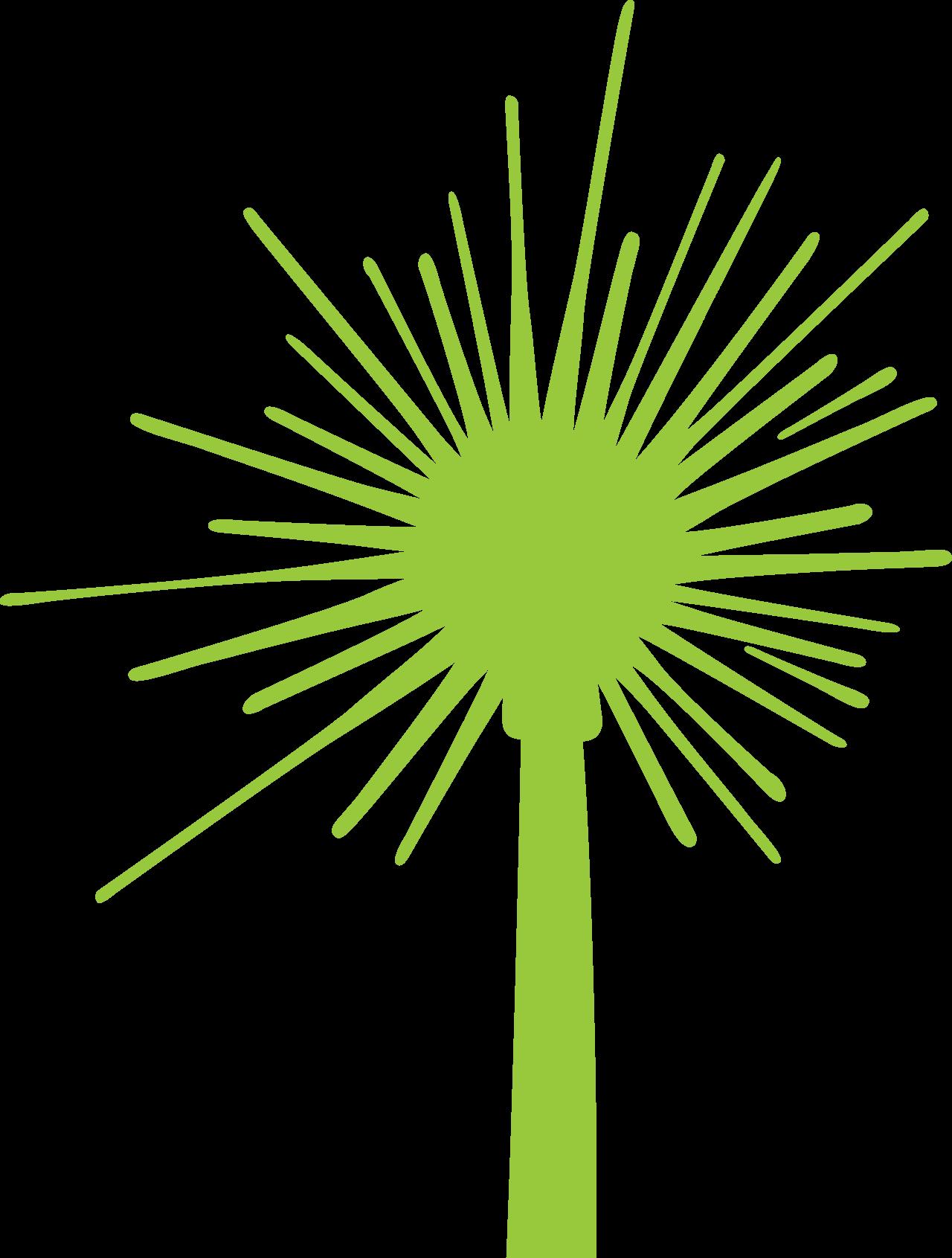Learning for the Future

Our Academic Philosophy & Approach
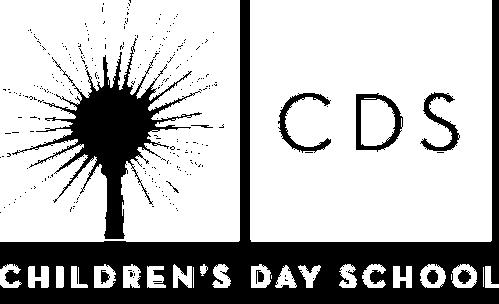


Our Academic Philosophy & Approach

At Children’s Day School, we believe that what you learn and who you become are equally important. That’s why our future-focused curriculum starts with the most important question: who will our students become? Our promise to you is that our graduates will demonstrate the following skills and mindsets:
COLLABORATION “I know how to contribute my strengths to a team to achieve a goal and how to lean on and learn from others on the team who bring different perspectives and strengths to the work.”
SELF-DIRECTION “I know how to manage my time and seek out the resources I need to drive my own learning with independence and agency.”
COMMUNICATION “I know how to share my ideas, identities, thoughts, and opinions while respecting and remaining curious and open to the ideas, identities, thoughts, and opinions of others.”
RESEARCHING & INQUIRING “I know how to use technology, media, and information responsibly to explore, teach, and learn about topics that interest me.”
CRITICAL & CREATIVE REASONING “I know how to think about a topic from different perspectives and can think creatively to solve problems and express myself.”

CURIOSITY & OPEN-MINDEDNESS “I am curious and open to different ideas and perspectives. I keep an open mind and actively look to make meaning and create connections.”
RESILIENCE & PERSISTENCE “I am comfortable making mistakes and willing to engage in productive struggle to achieve my learning goals.”
EMOTIONAL & SOCIAL INTELLIGENCE “I am engaged in my community. I seek to manage my emotions and pay attention to what and who is around me, so that I can show up wisely in my relationships with others.”
INTELLECTUAL & CULTURAL HUMILITY, REFLECTION & RESPONSIVENESS “I know that my perspective is one of many, and I am able to consider and incorporate the ideas, identities, and beliefs of others into my own thinking to broaden my worldview and build new understandings.”
ADVOCACY, ACTIVISM & CIVIC ENGAGEMENT “I engage actively in my community and the world and recognize, stand up, and act when injustice is present.”
“ “
My view of CDS students is that they are coming in with all the tools, habits of mind, and social skills that you would call features of independent school education. But CDS students have a healthier relationship around success, what achievement looks like, and a more holistic sense of self and how to be.
- Local High School Dean
CDS students and graduates make a positive impact in their communities. Here are a few of the many ways we empower our students to make a difference:

In our Lower School, fourth graders become school leaders. Fourth grade leadership teams meet with our Lower School Director, lead Lower School Assembly and morning meetings in other grades, and read to their schoolmates.
Seventh graders engage meaningfully in their community and inspire others to do the same during their Soup for Change impact project. Students identify a cause they are passionate about and work together to research how they can make a difference locally, connecting with nearby non-profits to learn more. Then, they design a service project. At a special dinner, guests enjoy soup thoughtfully made by the seventh grade chefs in their Food and Agricultural Sciences class while each group shares what they learned and pitches their projects. Guests vote, and projects are selected for pitch-in events where the entire school community is invited to participate.
Each year, the Josef Cooper Changemaker Award is given to CDS alumni who model the change-making spirit embodied by Joe, our co-founder who was dedicated to student activism.
I think CDS does a really good job of letting us know what happens in the world around us, and that really drives me to be an activist about certain things, such as climate change. CDS helps me realize how making an impact in society is what we as young people need to know how to do. “ “
- CDS Student
Our mission drives all that we do at CDS. Our curriculum has been intentionally designed to serve this mission: At Children’s Day School, what you learn and who you become are equally important.
CDS is a welcoming community in the big city, a farm and garden among urban streets, an advocate for responsibility to others as well as individual achievement, an independent school with down-toearth values, always asking how we can do this better.
We strive for balance so students become both academically successful and grounded. They leave CDS confident, with the humility to listen and the resolve to speak up for what they see as right.
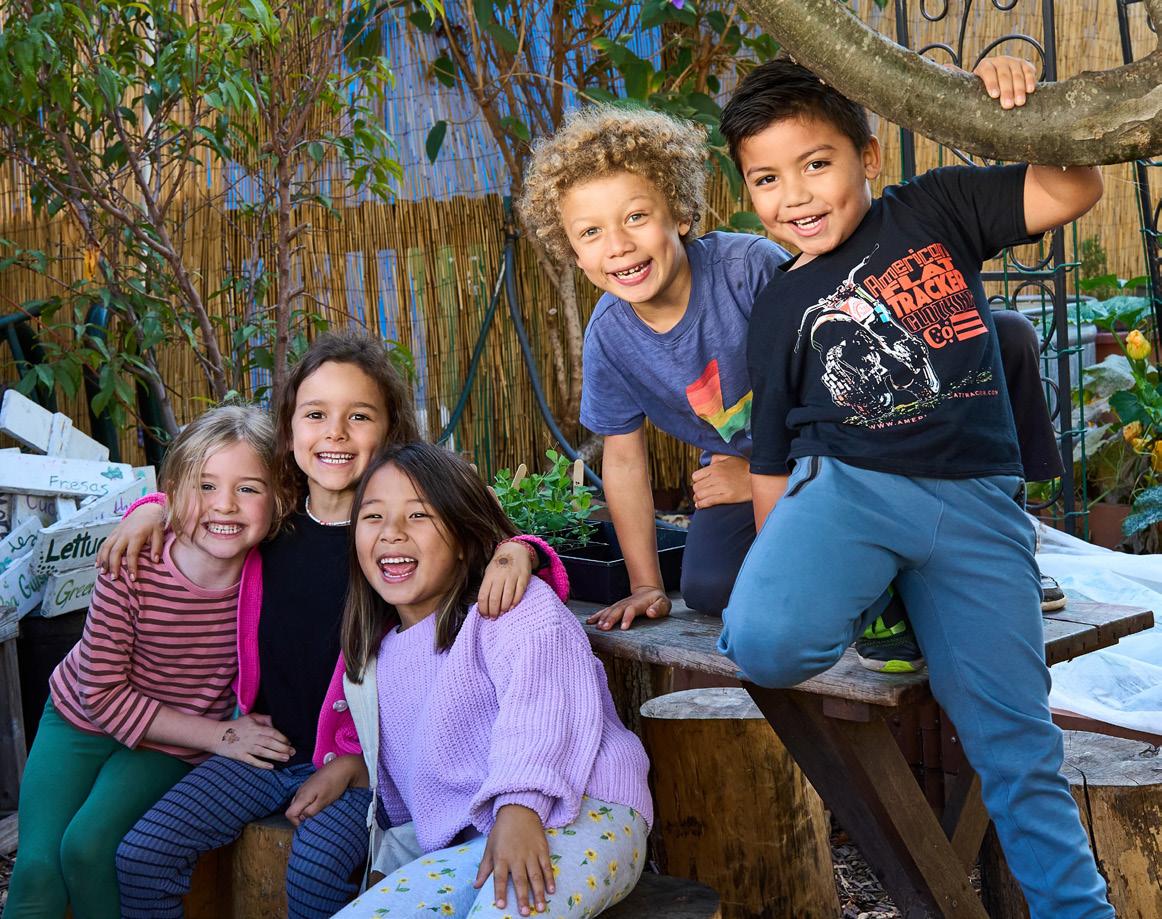
We are committed to preparing our graduates for their futures. In our unpredictable and technologydriven world, students need to learn more than facts. They need to learn how to investigate with curiosity, navigate conflict with compassion, use data strategically, and engage meaningfully in their communities. The future-focused curriculum at CDS prioritizes the development of these skills in the context of learning meaningful, relevant content. Prioritizing skill development sets learners up for a lifetime of learning. Our graduates leave us with a toolbox of durable learning skills that can be applied across new contexts in high school and beyond to continue to explore and unlock new learning.
Our unique model of teaching and learning incorporates five essential teaching practices to nurture nine competencies in our students, teaching content that matters through a social justice lens.
Our schoolwide competencies align directly to our profile of a graduate, translating our mission into concrete skills and learning outcomes that can be taught, practiced, and demonstrated in the classroom.
As CDS teachers plan lessons, units, and projects, they intentionally teach the skills embedded in our competency framework.
Each competency is made up of key learning skills. For example, Use Data Strategically includes teaching and assessing students’ ability to do the following in the context of a project or lesson:
• Analyze and interpret data
• Model and represent information
• Solve problems
• Construct explanations
• Use computational thinking
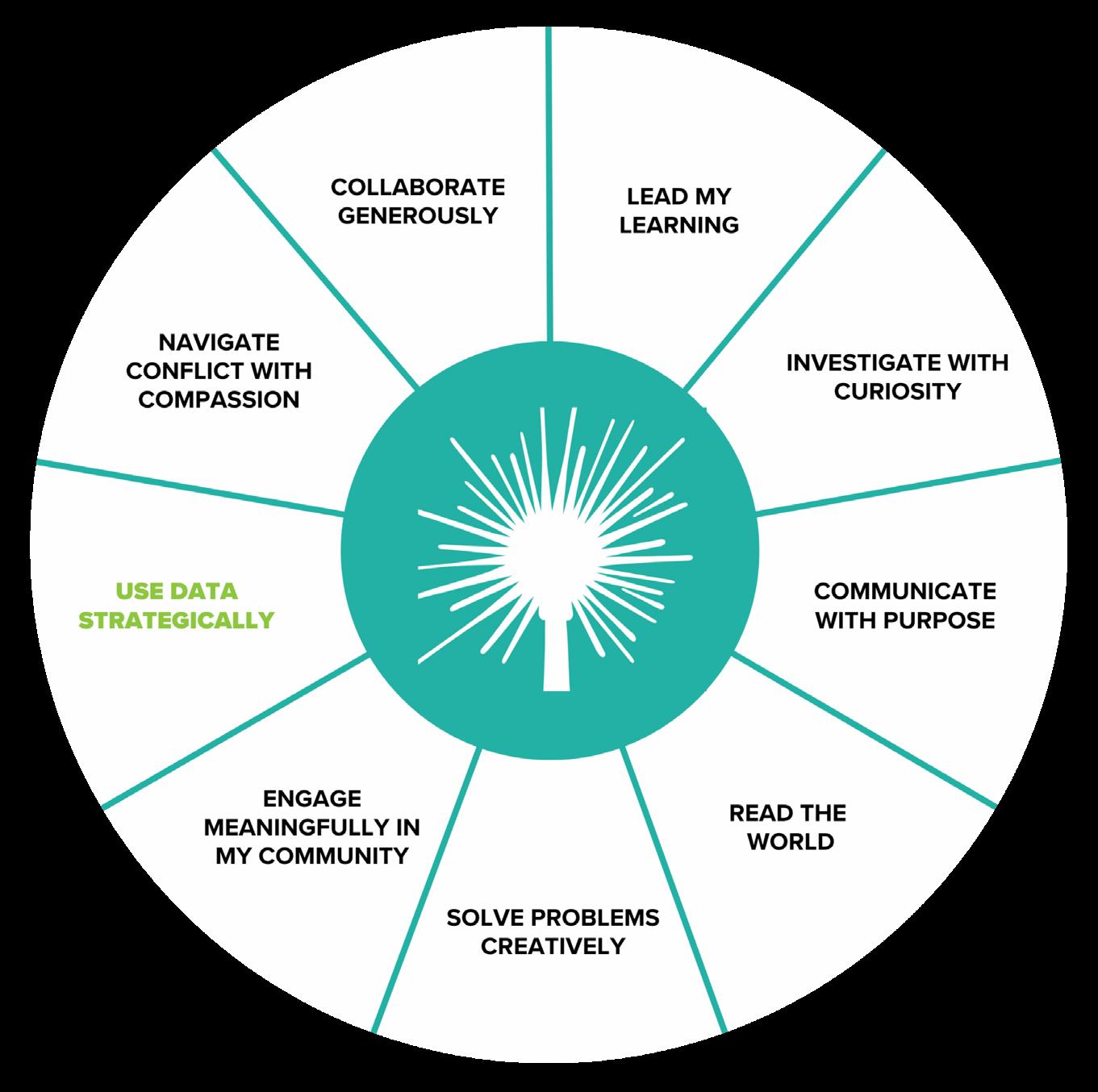
When preschoolers got curious about wheels and how things go, teachers turned it into a joyful study of motion, design, and creativity. Along the way, they built ramps, explored skateboard parts, and even created stop-motion movies. Preschoolers discovered a basic understanding of physics and nurtured their perseverance.
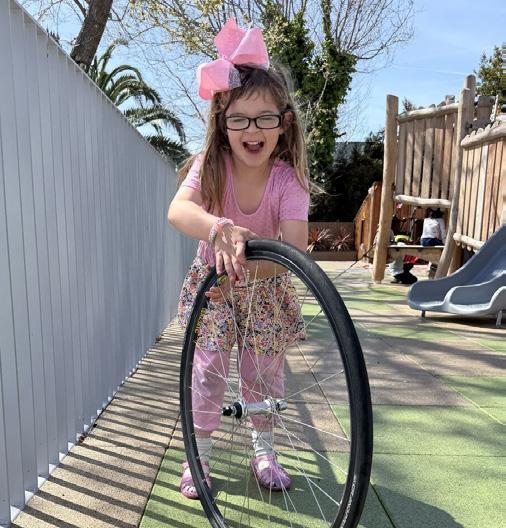
In their Neighborhood Inquiry Unit, first graders explore the neighborhood through listening walks, interviews with neighbors, and visits to nearby organizations. They practice observing and recording what they notice, drawing conclusions based on evidence, and taking purposeful action for collective good.
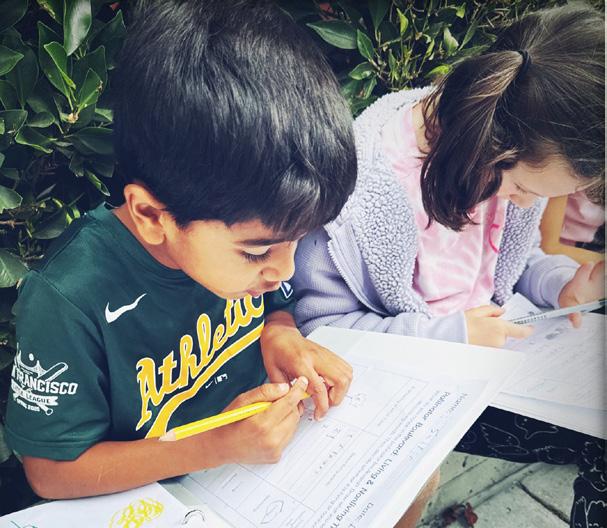
Third graders explore where our food comes from in an inquirybased project that starts in their Farm and Garden class. Students analyzed data to discover how far food travels to make it to our plates and the impact that has on our climate. At the end of the unit, students learn to reduce their impact by making a pizza using ingredients with low food mileage.
After learning about missions to Mars in science, sixth graders design, build, and motorize their own Mars rover models. Students are challenged to create rovers that can transport evidence over various Mars-like landscapes at least one meter. In their iLab class, students work with remote control components to create and iterate their rovers.

As part of an ecology study, fifth graders help teach San Francisco residents how to co-exist with coyotes by creating Coyote Reach and Teach resources for San Francisco Animal Care and Control. Students choose and refine a key message, using digital tools to craft posters, artwork, animations, and videos to engage their audience.
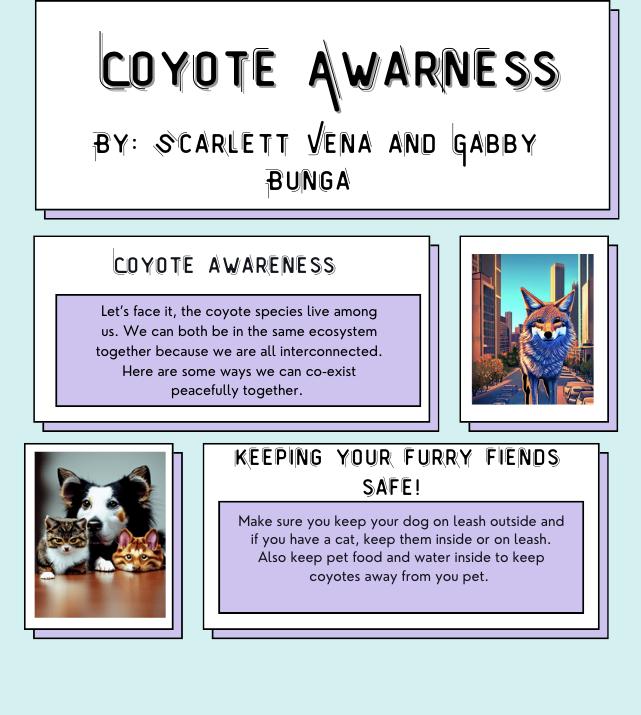

In eighth grade math, students explore functions, identifying where and how often they show up in the world around us. To make learning active, students use functions to model a Wacky Race, deciding on a starting line, finish line, and who takes part. Then, students model the race with an equation, tables, and graphs, all using the (x) and (y) variables to represent time and distance.

While our curriculum prioritizes skill development, content choices matter! Our curriculum develops content knowledge in all of the traditional school subjects: social studies, science, math, reading, technology, art, music, and more.
We meet and exceed national learning standards because we make intentional, mission-driven choices about how we frame and facilitate the exploration of these topics, ensuring that learning is affirming, relevant, and meaningful to students.
Learning that challenges our students doesn’t simply mean more work or more stress. At CDS, we empower students to make connections, question assumptions, and apply what they have learned to develop creative solutions to unpredictable realworld problems. This often starts with an essential question to ignite students’ curiosity and guide an in-depth, interdisciplinary inquiry that requires students to apply subject-specific learning skills and competencies in a problem-solving context.
While our students are tackling big questions and big problems more often than most, it’s not all projects, all the time. Classes also engage in topicbased units to cover essential skills, like division and multiplication in fourth grade.
Transitional kindergarteners practice design thinking and Solve Problems Creatively by making a unique musical instrument. Their exploration starts by asking what words like “design” and “prototype” mean. “It’s when you draw something, then model it. Then you make the real thing,” one student shared.
Students spend time exploring materials, sketching and refining designs of their ideas, and creating a prototype of their instrument. They Use Data Strategically to fine-tune the design before crafting the finished product. This design challenge connects to students’ study of sound, which results in a T(AL)K video where students shared their learning.
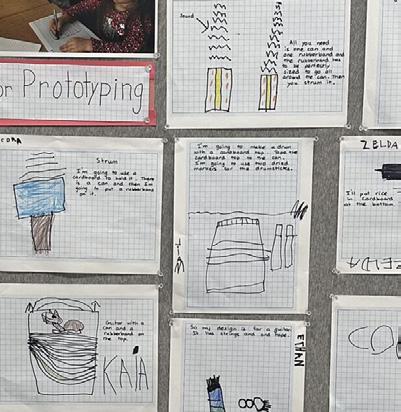

As students enter first grade, they are ready to expand their understanding of community beyond the classroom and school to the neighborhood. Through field trips, interviews, noticing walks, read alouds, data collection, and reflective writing, students Investigate with Curiosity to explore the nature in the neighborhood and learn more about the people and services in our community. Students meet people from local organizations that are helping in our neighborhood and decide, as a group, on an action they can take to Engage Meaningfully in My Community.
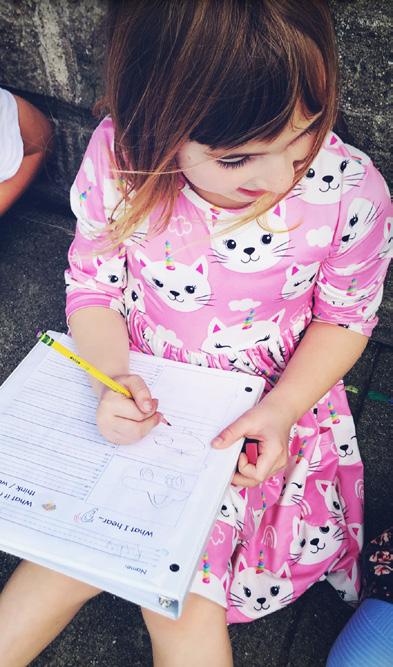
CDS educators craft memorable, authentic learning experiences through inquiry-based learning design, a research-backed approach that empowers children to ask big questions and apply their knowledge to solve problems thoughtfully and creatively. It starts with a question, posed by the teachers or learners, then follows this process: Tune in. Find out. Sort it out. Go further. Make conclusions. Take action. Reflect. This approach contrasts with the traditional model of teachers presenting facts and asking students to reproduce that knowledge on a test. By contrast, this approach helps students not only master content knowledge but also learn how to create strategies to find answers, reflect, and do something with what they learn.
Second graders explore the California rocky shore to understand how organisms adapt to their environment. Students learn about different tidal zones, build 3D models of the zones, create a script and stop-motion animation demonstrating how creatures adapt to the tides, and craft a non-fiction narrative from an organism’s perspective to explain how its adaptations help it survive.
Second graders also take a field trip to Pigeon Point to explore tidal pools firsthand and participate in a beach clean-up, learning how their actions can keep the shores healthy for the organisms they study.
Through this project, students master subjectspecific science knowledge, hone their writing, and build their competencies by Investigating with Curiosity, Communicating with Purpose, and Engaging Meaningfully in My Community

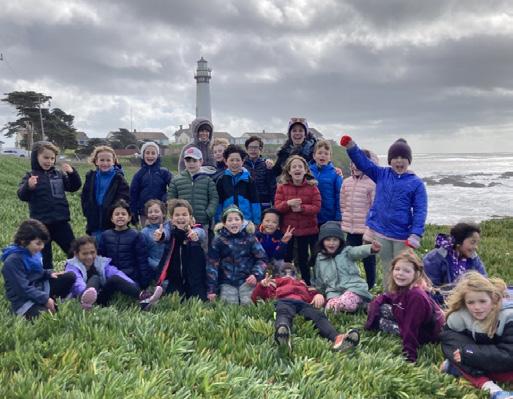
In fifth grade, students learn about Japanese incarceration during World War II and discuss what we can learn from this part of California’s history, practicing the skill of learning from the past as part their Read the World competency development.
Students learn how to interrogate primary and secondary sources to gain a more varied and honest interpretation of past events. Fifth graders discuss photographs by Dorothea Lange during a “see, think, wonder” gallery walk, analyze the language used in U.S. government videos from the time, and explore a local exhibit that examines the role the Presidio of San Francisco played in the unjust incarceration.
Seventh graders tackle big questions about identity, humanity, sympathy, empathy, and justice in their humanities class. Students read articles, stories, poems, and books that deal with identity in many different aspects, digging into how we self-identify, how others identify us, and what dilemmas arise when there are differences between the two.
Students dive deeply into The 57 Bus by Dashka Slater to further explore themes of identity, privilege, bias, community, and justice as they analyze character development, learn to annotate texts, engage in self-reflection, and write persuasive essays using evidence. These lessons build their ability to Navigate Conflict with Compassion, Communicate with Purpose, and Read the World


At CDS, our goal is that students apply the knowledge and skills we teach them to build more inclusive and just communities. We accomplish this intentionally by creating an everyone classroom where conversations are culturally relevant, affirming, and grounded in our core belief that differences lift us. Our classroom routines and culture give students concrete experience with the principles of inclusion and justice.
CDS teachers draw on several curriculum practices and standards, including restorative practices to manage conflict and the Learning for Justice Social Justice Standards framework to guide lesson planning. Students explore all academic topics through a lens of social justice and diverse perspectives by always asking these key questions:
Identity: Who am I in this? What is my perspective and why?
Diversity: Who are others in this? What are their perspectives?
Justice: What is fair? What is just in this context?
Action: What agency do I have to make a positive impact?
Educators are drawn to CDS because of our research-backed and values-driven approach to education. As educators, we affirm our committment to eleven learning beliefs:
We believe in the wisdom of slowing down and celebrating childhood, adolescence, and lifelong learning.
We believe in having the courage to take risks, make mistakes, and learn from the process in a safe and supportive environment.
We believe that diversity, equity, and inclusion are essential to developing empathy, selfadvocacy, and allyship in an increasingly complex and interconnected world.
We believe that nurturing a strong familyschool partnership is an essential and shared responsibility.
We believe that curiosity, collaboration, and play drive learning.
We believe that interdisciplinary learning provides real opportunities to understand how the world is interconnected.
We believe that inquiry-based learning leads to deep understanding, action, and reflection.
We believe that assessment should be embedded in the learning process and is most meaningful when it incorporates reflection, feedback, and revision.
We believe in using language, technology, media, and information responsibly to communicate and inquire as critically-engaged global citizens.
We believe that building relationships within and beyond our campus fosters friendships, leadership, and social justice.
We believe that growing food and raising animals cultivates environmental justice and stewardship and makes our connection to the natural world tangible.
Our amazing teachers are at the heart of our curriculum. The CDS community of educators is diverse, talented, passionate, creative, and collaborative. Teachers are encouraged to bring their full selves to curriculum planning, guided by the CDS Learning Beliefs and five essential teaching practices:

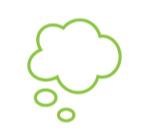
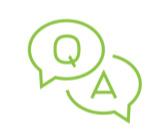


Explicit Skill and Strategy Instruction
Making “invisible” thinking skills and processes visible
Student-led Inquiry and Problem Solving
Inviting students to pose their own questions and solve problems by testing ideas and reflecting on outcomes
Discussion-Based Classrooms
Prioritizing discussion, reasoning, relating, and questioning to advance understanding
Differentiation and Student-Centered Support
Deeply know students and meet them where they are to deliver just-right teaching that engages their interests
Coaching: Conferencing and Feedback
Give specific and actionable feedback to learners about their learning process and progress

Our primary method of assessment at CDS is performance-based assessments. These assessments involve students demonstrating their learning by applying knowledge and skills to create an authentic product with real-world relevance to meet learning goals based on the subject and our competencies. Teachers differentiate the goals to meet individual learners where they are, providing a more student-centered approach to assessment and feedback. Each skill in our competencies has different levels so that teachers can equitably assess students’ growth in these key learning areas.
In Math and English Language Arts, students are also assessed via unit and checkpoint assessments. Beginning in second grade, we administer the MAP Growth assessment of Reading, Language, and Math to assess foundational knowledge and skills in those subjects.
With guidance, I can use a model or tool (e.g., beads, manipulatives) to solve a problem.
With guidance, I can identify some steps or parts of a larger event or process.
With guidance, I can describe a sequence of steps to get to an outcome.
With guidance, I can use a digital tool (e.g., a calculator, spell check) to solve a problem.
I can identify some parts of a larger technological task or design process, and I can identify some patterns or sequences I see (e.g., repetitive steps).
I can describe the sequence of steps I’d take to complete a technological or digital design process.
I can select and use an appropriate digital tool to solve a problem.
I can break a technological task or digital design process into its component parts and identify patterns among them.
I can analyze the sequence of steps that led to an outcome or result of a technological or digital design process and identify any errors.
We love the CDS community because of each member’s outstanding dedication to what they do, the magic those efforts create, and the learning — in all senses — that is so thoughtfully nurtured and encouraged to flourish.
I can select and use an appropriate digital tool to solve a problem and I can critically evaluate the results the digital tool produced.
I can break a digital design challenge or technological task into its component parts, identify patterns, and use/create sequences or modules to approach it.
When designing or creating with technology, I can analyze the sequence of steps that led to an outcome or result, identify errors, and correct them.
I can select and use a variety of digital tools to solve problems. I can critically evaluate the results the digital tool produced, and I can adjust or modify my use in response.
I can break a technological task or digital design challenge into its component parts, identify patterns, and use algorithmic thinking to create sequences or modules to approach it and/or automate, streamline, or expedite it.
I can compare the things I make or do using technology with the sequence of steps I took in order to identify errors, debug my processes, and improve my results.
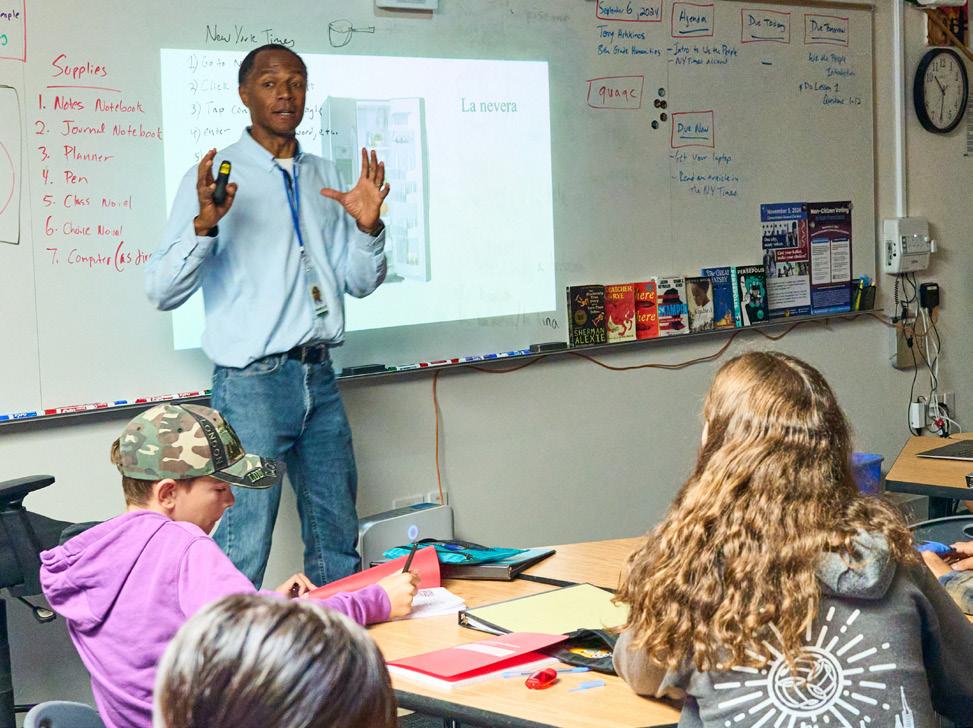
CDS signature programs are integrated into our curriculum and designed to be experiential and unforgettable. From caring for our campus sheep and chickens to backpacking in Yosemite to leading a Friday Assembly or tinkering in the CDS Hub, these are the lessons and memories your child will cherish.
CDS students are grounded in the natural world and working toward a more sustainable future, inspired by life-changing experiences in our on-campus Farm and Garden. In their early years, students learn to care for the plants and animals that live on our campus, discovering the science behind how things grow and what animals need. As students grow, this foundation expands into an in-depth Food & Agricultural Sciences program, where middle schoolers deepen their understanding of environmental and biological science through hands-on experiential learning about the science of taste, plant genetics, and humans’ digestive biome, as well as social issues in the food industry.
Every fall, middle schoolers embark on an outdoor adventure to Pinnacles, Lake Tahoe, Yosemite, or somewhere similar. Steeped in the values of risktaking and courage, students navigate challenges with resilience and integrity during our trips, fostering a sense of responsibility towards each other and connection to the natural world. Our outdoor education program builds community and teaches students that we can truly thrive only through collaboration.

Starting in preschool, students use the design process to make and test ideas. With dedicated tinkering and arts areas in preschool classrooms, a special kindergarten and Lower School makers’ Hub, and iLab in the middle school, CDS students have opportunities to use physical and digital tools to bring their ideas to life, both in classroom collaborations and during their free time. Tinkering helps students develop fine motor skills, while makerspaces give growing students the opportunity to get comfortable with a wide variety of tools, build resilience, and collaborate across grades.
The Children’s Day School community feels different, something you may notice during our student-led Friday Assemblies. CDS is a warm community where people look out for each other, families find partners to help bring up their children, and everyone can feel safe, seen, and known. We encourage openness and connection, which leads to a sense of belonging and trust. Students learn to take this spirit of openness out into the world.
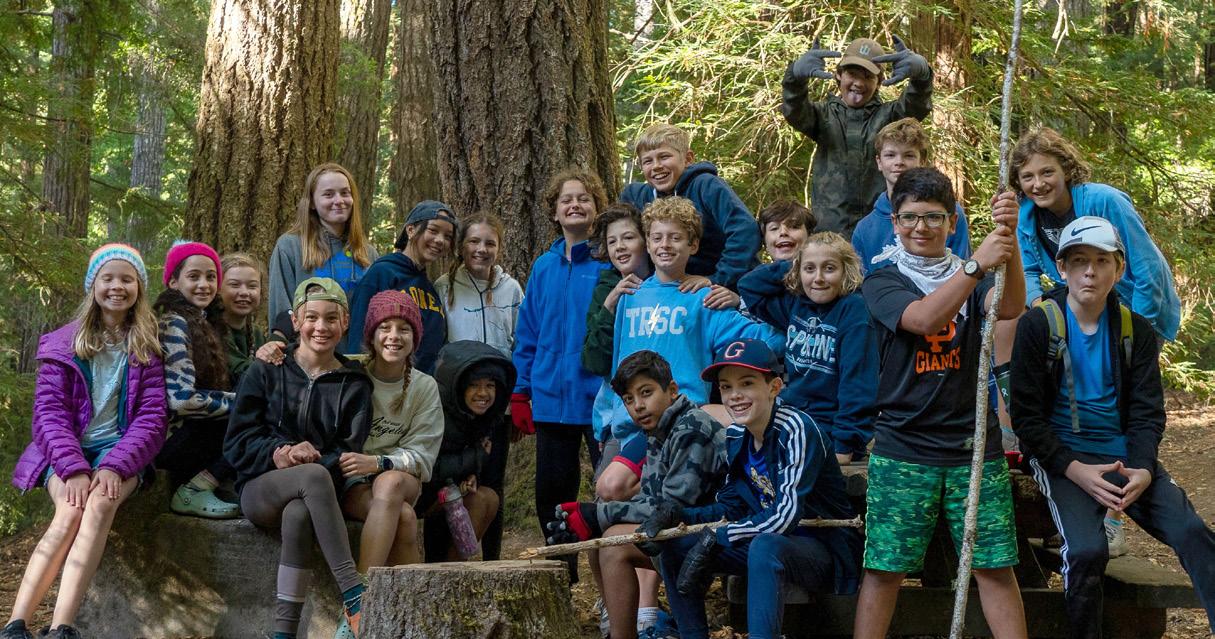

Visit our website at cds-sf.org to see how your child will grow at Children’s Day School, from preschool through eighth grade. Explore each division and discover our curriculum and learning goals by grade.
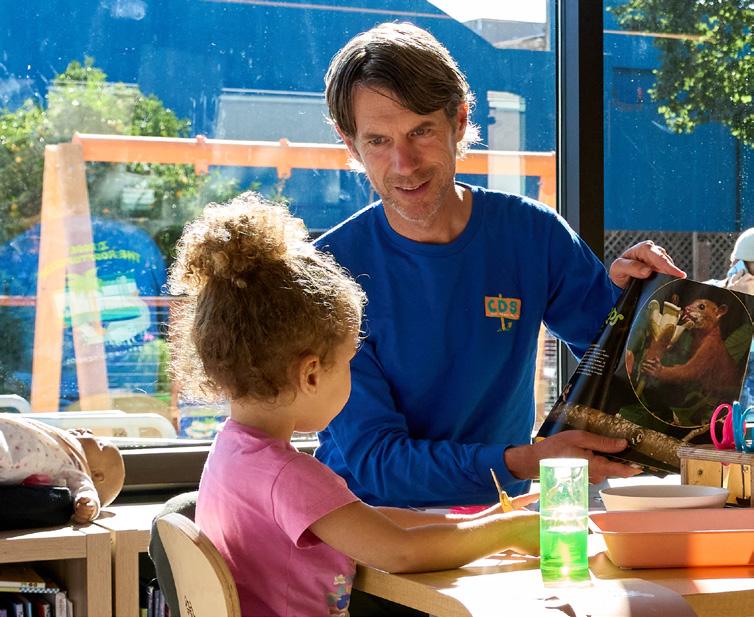

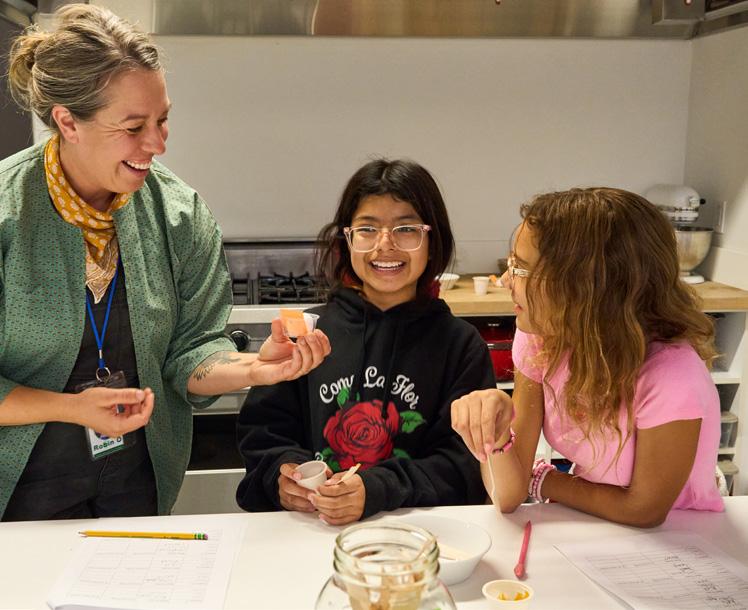
Early Childhood Program
Preschool-Kindergarten
Antonette Greene, Director, EdD antonetteg@cds-sf.org
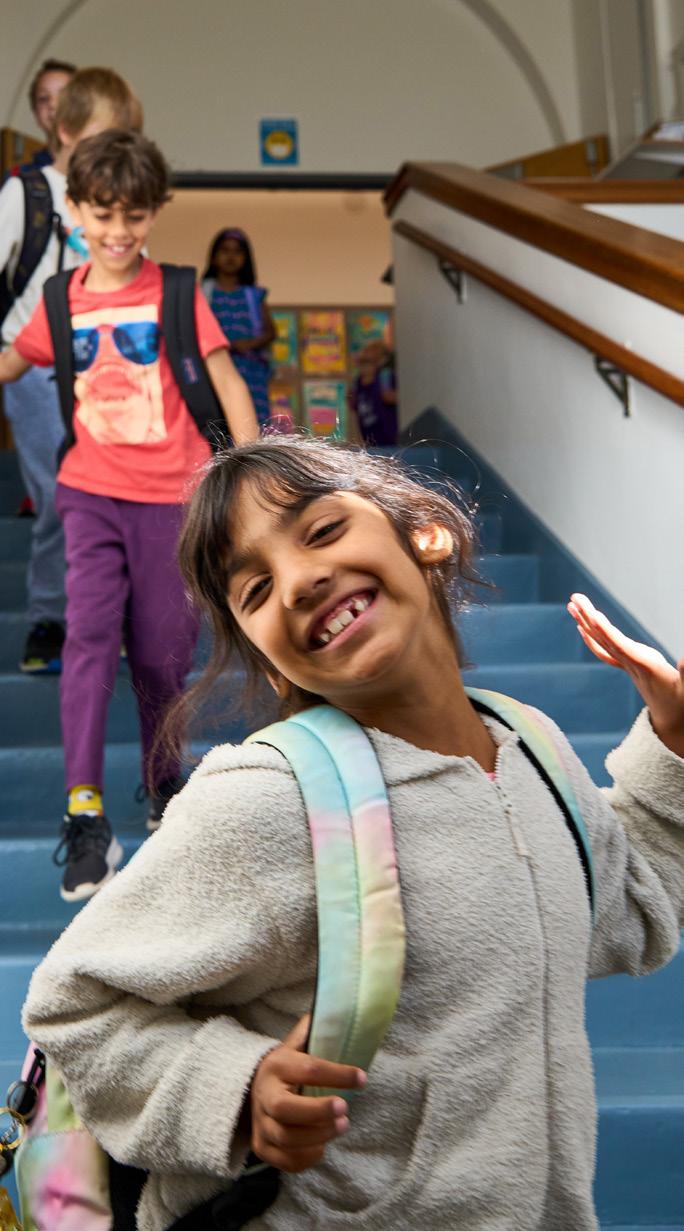
Lower School Grades 1-4
Marie Keating, Director mariek@cds-sf.org
Knowing things is not enough. It’s what you do with what you know that makes a difference.
Middle School Grades 5-8
Chris Wachsmith, Director chrisw@cds-sf.org
Questions about our curriculum? Contact our Director of Curriculum & Program Innovation, Lindsay Hershenhorn, EdD, at lindsayh@cds-sf.org.
